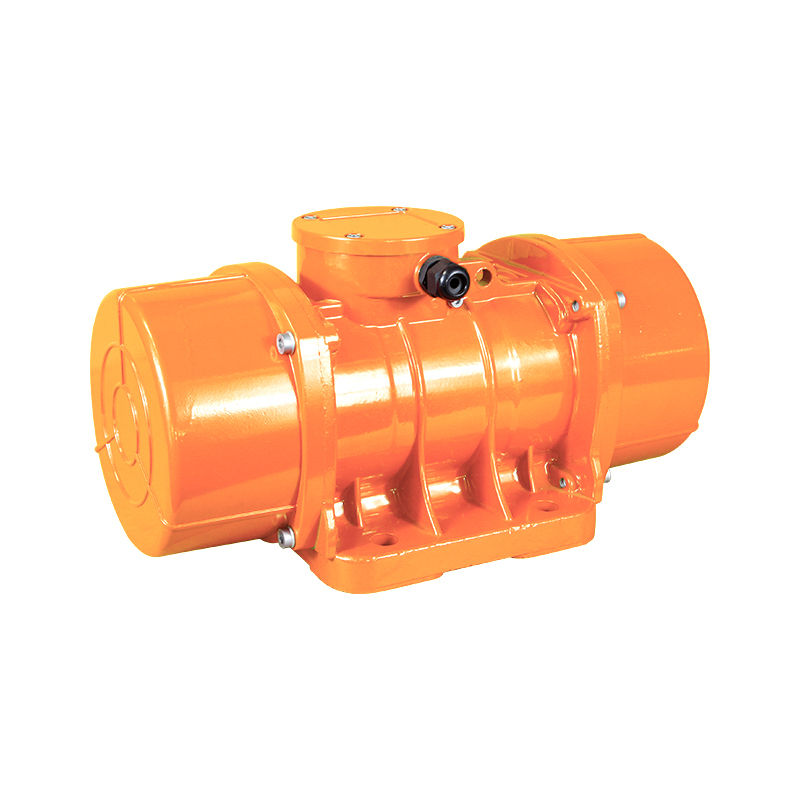In the world of industrial machinery, efficiency, durability, and little downtime are critical. One of the essential components in various sectors—including mining, construction, and manufacturing—is the Three Phase 6 Poles Industrial Vibration Motor. Renowned for its high torque and low-speed operation, this motor has become the backbone of heavy-duty vibrating equipment such as screens, feeders, and compactors. As demand for high-performance and low-maintenance equipment grows, understanding and applying effective maintenance methods for the Three Phase 6 Poles Industrial Vibration Motor has never been more important.
The Significance of Proper Maintenance
The Three Phase 6 Poles Industrial Vibration Motor plays a vital role in applications that require continuous vibration and high mechanical output. However, despite its robust construction, the motor is not immune to wear and tear. Regular and strategic maintenance not only extends the motor's lifespan but also enhances its performance and safety.
Neglecting routine maintenance can result in severe consequences, including overheating, reduced vibration amplitude, misalignment, and even complete motor failure. Thus, implementing a comprehensive maintenance strategy tailored for the Three Phase 6 Poles Industrial Vibration Motor is essential for ensuring uninterrupted operation.
Key Components Requiring Attention
Before diving into the maintenance methodology, it's important to understand the core components of the Three Phase 6 Poles Industrial Vibration Motor that typically require regular inspection:
Bearings: One of the wear-prone components. Their lubrication and integrity must be checked periodically.
Eccentric Weights: These are responsible for generating vibration and must remain properly aligned and securely fastened.
Windings and Insulation: Over time, these can degrade due to heat and vibration. Resistance testing helps ensure electrical integrity.
Casing and Mounting Bolts: Vibrations can loosen external fixtures. These should be re-tightened and inspected for cracks.

Routine Maintenance Method
A structured maintenance protocol for the Three Phase 6 Poles Industrial Vibration Motor typically includes the following steps:
1. Daily Checks
Operators should begin with a visual inspection. Look for any abnormal noise, heat, or vibration levels. Ensure that the motor starts smoothly without hesitation or humming. Verify that there are no loose bolts or debris around the motor housing.
2. Weekly Lubrication
Depending on the operational intensity and environment, bearings in the Three Phase 6 Poles Industrial Vibration Motor may require weekly lubrication. Always use manufacturer-recommended lubricants and avoid over-lubricating, which can be as harmful as under-lubrication.
3. Monthly Electrical Testing
Perform insulation resistance tests using a megohmmeter to detect any weakening in winding insulation. Check voltage and current balance across the three phases to prevent phase imbalance, which can cause motor overheating and reduced lifespan.
4. Quarterly Vibration Analysis
Conduct vibration analysis to identify imbalance or misalignment in the Three Phase 6 Poles Industrial Vibration Motor. This predictive maintenance step allows operators to address issues before they result in equipment failure.
5. Semi-Annual Deep Inspection
Twice a year, carry out a detailed inspection. Disassemble the motor if needed and clean the internal parts. Check all mechanical fasteners and seals, and inspect the rotor and stator for signs of damage or wear. Replace any components that show signs of fatigue.
Advanced Maintenance Technologies
Modern maintenance techniques for the Three Phase 6 Poles Industrial Vibration Motor now leverage condition monitoring technologies. These include thermography, ultrasonic analysis, and IoT-based sensors that provide real-time data on motor health. By integrating these tools into the maintenance regime, companies can significantly reduce unexpected breakdowns and extend the service life of the motor.
Training and Documentation
One often overlooked aspect of maintenance is training. Operators and maintenance personnel should be thoroughly trained in the specifics of the Three Phase 6 Poles Industrial Vibration Motor. Additionally, keeping detailed records of all maintenance activities helps in tracking the motor's performance trends and planning future maintenance more effectively.

 英语
英语 葡萄牙语
葡萄牙语 西班牙语
西班牙语 русский
русский






 Tel: + 86-576-86320988
Tel: + 86-576-86320988
 Fax: + 86-576-86333217
Fax: + 86-576-86333217
 E-mail:
E-mail:  Add: Dayangcheng Industrial Zone, daxi, wenling, zhejiang, china
Add: Dayangcheng Industrial Zone, daxi, wenling, zhejiang, china
